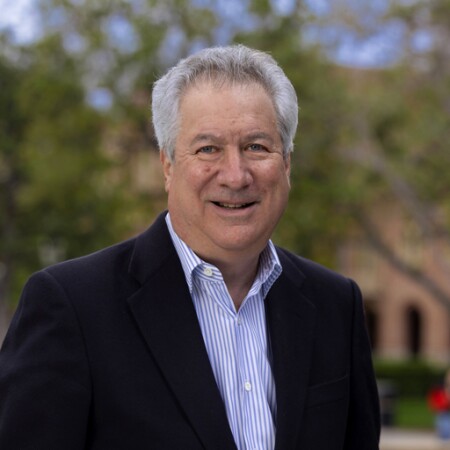There’s no way around it: Los Angeles is short on cash.
A previously projected $1 billion shortfall in the city’s 2025–2026 budget was recently reduced to a still-sizable deficit of $800 million. It doesn’t bode well for the vast reconstruction effort facing the region after the Palisades and Eaton fires in January 2025.
“Regardless of how clever we may be with financing, we’re short of money to rebuild,” says Richard Green, a ULI trustee who directs and chairs the University of Southern California Lusk Center for Real Estate.
Although there are exceptions in the relatively well-heeled Pacific Palisades, most homeowners there likewise face financial difficulties. There are “a whole bunch of people who, even if they can keep their first mortgages, are going to need second mortgages [to be able] to rebuild,” Green says.
Banks seem willing to provide second mortgages, but they remain limited by debt-to-income (DTI) tests, which compare a borrower’s monthly debt payments to their gross monthly income. For many fire victims, including almost a quarter who are older than age 65 and may no longer be earning an income, these tests are hard to pass.
“In Altadena, you have a disproportionately large number of Black families who are homeowners,” Green says, adding that three-quarters or more of Black families in Altadena are homeowners, as compared with 33.5 percent for L.A. County.
But Altadena’s Black homeowners are “also disproportionately intergenerational,”Green says. “Because of . . . how lenders look at multigenerational households’ income, [they may struggle to get mortgages].”
Rethinking mortgage underwriting
The experts involved in Project Recovery—a living document of a report developed by ULI Los Angeles, UCLA, and USC that provides actionable recommendations to expedite fire recovery—are now double-clicking on an urgent solution: mortgage underwriting that prioritizes loan-to-value ratios (LTV) instead of DTI tests to assess a borrower’s risk level and determine loan eligibility.
LTV is calculated by dividing the loan amount by the appraised value or purchase price of the home, expressed as a percentage. Lower LTV ratios indicate more borrower equity and less risk for the lender. Accordingly, borrowers with lower LTVs typically qualify for better interest rates.
Land values are still very high, making LTV, if prioritized over DTI in mortgage underwriting, a more viable path for homeowners, Green says.
TIF districts
Project Recovery’s experts initially recommended the establishment of Tax Increment Financing (TIF) districts in the Eaton and Palisades fire areas. They also recommended that authorities issue bonds, which are often used to finance public infrastructure or other upfront costs of projects within the TIF district.
TIFs are public funding mechanisms that redirect future property tax revenue increases, generated by rising property values in a designated area, to finance infrastructure and redevelopment projects within that same zone.
By creating a TIF district, municipalities freeze the current property tax base and allocate incremental tax revenue from subsequent value growth to repay bonds or fund improvements. This tool has been adapted in California as Enhanced Infrastructure Financing Districts (EIFDs), which expand eligible projects to include ones related to climate resilience and disaster recovery.
Although TIFs, EIFDs, and bonds are still key recommendations, caveats remain. TIFs and similar districts need to be used in a balanced way, so that they don’t drain city coffers.
“We need to think very carefully about how we use TIF facilities,” Green says. “There still needs to be enough funding for the larger city initiatives . . . schools, police, fire, et cetera.”
TIFS are among “the hardest things to pull off in public/private partnerships,” Green says.
First things first
Although financing presents a huge hurdle to recovery, there are steps that need to be taken before mortgage underwriting changes are addressed. For one, before issuing mortgages, banks and other lenders want clarity on the safety of the soil at lots affected by the fires, Green says.
Soil contamination, however, is a whole case of worms.
First, the Army Corps of Engineers and the Federal Emergency Management Agency (FEMA), responsible for the two initial phases of debris cleanup, declined to conduct comprehensive soil testing for residual toxic substances—an unusual decision in the history of the region’s fires. Instead, they opted to remove only ash, debris, and a top layer of soil from destroyed properties.
Then a Los Angeles Times investigation revealed that, even after the Corps of Engineers removed the topsoil, two out of ten homes remediated in Altadena still had heavy metals in excess of California’s health standards. And Pasadena Unified School District’s testing found that almost half of its school sites were contaminated—with lead, the carcinogen arsenic, or both.
Although a new Los Angeles County Department of Public Health program offers free lead testing to residents in—and downwind of—the Eaton burn area, the program does not test for other toxins, leaving unresolved questions around health risks.
“Until everybody is comfortable with the level of cleanliness of the soil, it’s hard to [expect] anything to get financed,” Green says. “Bondholders aren’t going to want to have to deal with that liability, and banks are not going to want to deal with that liability, so until there’s clarity on whether the soil is safe, it’s hard to [imagine] some things moving forward.”
There’s also the challenge of rebuilding infrastructure, which will be the subject of our next, and final, article in this series, coming next Friday.
“One of the most important steps toward long-term resilience is the undergrounding of power lines to protect these areas for the future,” says Nadine Watt, CEO of Watt Capital Partners, who contributed to Project Recovery. “That’s a very expensive proposition, obviously, and it could create significant delays in rebuilding. But if you don’t underground your power and utilities—no matter how fast you get your permits, or how fast debris removal happens—you miss the opportunity to build vertically with resilience for the future.”
This article is part of a series examining topics in the Project Recovery report. Join us next Friday for a new installment.







